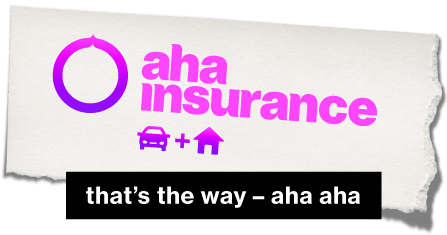Car insurance North York, ON
Part of a series on car insurance rates in Ontario.

Car Insurance North York FAQs
What type of auto insurance do I need in North York?
In North York, there is specific auto insurance coverage that is mandated by Ontario law. This includes:
Third-Party Liability Coverage
This type of coverage is obligatory and guarantees protection in situations where you’re liable for causing harm or property damage to others during an accident. In Ontario, the minimum required coverage is set at $200,000, though many drivers opt for higher limits for enhanced safeguarding.
Direct Compensation – Property Damage (DC-PD) Coverage
With this coverage, if you’re involved in an accident where another driver is deemed at fault, your insurer manages the cost of repairing your vehicle and its contents. This negates the need for protracted claims procedures involving the other driver’s insurance.
Uninsured Motorist Coverage
This coverage offers protection in the event of collisions with uninsured or underinsured drivers, as well as hit-and-run cases.
Accident Benefits Coverage
This facet extends benefits covering medical expenses, rehabilitation, and lost earnings for both you and your passengers, irrespective of who bears responsibility for the accident
What is the most affordable area for car insurance in North York?
When seeking affordable car insurance rates in North York, the M2N neighbourhood emerges as a standout option. This area offers a compelling choice for individuals looking to manage their insurance costs without compromising on essential coverage.
Several factors contribute to favourable car insurance rates in the M2N neighbourhood. These include lower instances of accidents and claims, a relatively lower population density, and a well-maintained road infrastructure that potentially reduces the likelihood of collisions. Additionally, the area’s crime rate and vehicle theft statistics may play a role in influencing insurance costs.
However, while the M2N neighbourhood offers competitive rates, it’s important to remember that individual insurance premiums can still vary significantly based on personal factors such as driving history, age, vehicle type, and coverage preferences.
What type of car insurance does aha insurance offer in North York?
Aha insurance provides a range of insurance options, encompassing both obligatory and voluntary coverage choices in Toronto. Presented below is an overview of the most commonly chosen insurance coverage alternatives.
Mandatory Coverage
Third-Party Liability Coverage
This compulsory coverage guarantees safeguarding in situations where you cause harm or damage to others while driving your vehicle in North York. It encompasses legal expenses, settlements, and claims up to the mandated minimum coverage threshold of $200,000. Having third-party liability coverage provides you with the confidence to drive securely, equipped with essential coverage to address potential liabilities that might arise on North York’s roads.
Uninsured Motorist Coverage
In North York, uninsured motorist coverage delivers protection in case of an accident involving a driver who lacks proper insurance, is underinsured, or flees the scene. This coverage offers a safety net when the responsible driver’s insurance falls short of covering your injuries or damages. In such instances, uninsured motorist coverage steps in to reimburse for your losses, including medical costs, vehicle repairs, and other relevant expenses.
Accident Benefits Coverage
Encompassing a range of advantages, accident benefits coverage includes medical expenses, costs for rehabilitation, income replacement, and other related financial expenditures that result from an accident. Through accident benefits coverage, residents of North York can access vital support and financial aid to expedite their recovery and manage the financial consequences of their injuries.
Direct Compensation-Property Damage (DC-PD) Coverage
DC-PD coverage becomes relevant if your vehicle sustains damage in an accident caused by another party. With DC-PD coverage, you have the option to receive compensation directly from your insurance provider, bypassing the need to initiate a claim against the driver at fault. This approach provides a simplified way to restore or replace your vehicle, saving you time and hassle.
Optional Coverage
Collision Coverage
Collision coverage is a choice available within automobile insurance that offers financial protection against damages to your vehicle caused by collisions with other vehicles or objects when the accident is deemed at fault. This coverage aids in managing the costs tied to repairing or replacing your vehicle up to its prevailing market value while factoring in your chosen deductible amount.
Comprehensive Coverage
In North York, comprehensive coverage is an elective aspect of car insurance that furnishes extensive safeguarding against damages to your vehicle that result from factors other than collisions. This coverage extends its protection to a wide array of non-collision occurrences, encompassing theft, vandalism, fire, hail, falling objects, and damage arising from interactions with animals. Comparable to collision coverage, comprehensive coverage assists in addressing the expenses linked to mending or substituting your vehicle, taking into account its present market value and the deductible amount you have opted for.
Specified Perils Coverage
Specified perils is a featured option within auto insurance that delivers specialized shielding against a predetermined roster of risks meticulously outlined in your policy. These risks often encompass distinct perils such as fire, theft, hail, lightning, and other perils explicitly itemized within the policy. Opting for specified perils coverage ensures insurance against damages arising from the hazards explicitly detailed in the policy, although coverage for damages caused by other perils might not be included.
All Perils Coverage
All perils coverage constitutes a comprehensive and expansive genre of auto insurance that fuses collision and comprehensive coverage. Opting for all perils coverage ensures protection against a wide spectrum of risks, encompassing collisions, theft, fire, vandalism, and an array of other perils unless they are specifically excluded in the policy. This coverage provides a more comprehensive and all-encompassing level of protection for your vehicle.
What is the average car insurance cost in North York?
The cost of car insurance in North York, Ontario, can fluctuate based on factors like the driver’s driving history, age, vehicle model, and chosen coverage preferences. According to available data, the average annual expense for car insurance in North York is around $2,000 – $3,000 depending on the specific area. However, it’s important to emphasize that this amount serves as an average, and individual insurance premiums can diverge significantly. Variables unique to each driver’s situation and the chosen insurance provider have the potential to lead to premiums that are either higher or lower than the average benchmark.
For a more precise insight into car insurance expenses in North York, it’s advisable to obtain quotes from multiple insurance companies and meticulously compare rates and coverage alternatives. This approach facilitates a comprehensive assessment of insurance costs tailored to your distinct circumstances. By connecting with aha insurance, you can engage with an insurance broker who will aid you in contrasting quotes from reputable insurance firms, streamlining the process and potentially saving you both time and money. Their expertise ensures that you obtain well-suited coverage choices at competitive rates in North York.
What are the main things affecting my auto insurance premiums in North York?
Your car insurance premium in North York is influenced by a range of elements that collectively determine your risk profile as a driver. Understanding these factors can equip you to make knowledgeable choices to manage and reduce your insurance costs. Here is a compilation of aspects that insurance providers consider while assessing your insurance premiums.
Driving History
Your past performance on the road carries significant weight in determining your premium. Insurers assess your track record of accidents, claims, and traffic violations to evaluate your level of risk. A clean driving history devoid of accidents or violations signals responsible driving habits and can lead to lower premium rates. On the contrary, a history marked by collisions or traffic infringements might result in elevated premiums in North York due to the perceived higher risk associated with your driving behaviour.
Age and Experience
Less experienced and younger drivers often encounter higher premium costs. This is rooted in statistical evidence indicating that younger individuals are more prone to accidents. As you gain driving expertise, you may notice a decrease in premiums as your driving skills improve and your perceived risk diminishes.
Vehicle Type
The type of vehicle you own can have a significant impact on your premium in North York. Vehicles with high-performance or luxury features often come with higher insurance costs due to the expenses associated with repairing or replacing their specialized components. Additionally, specific vehicle models might be more attractive targets for theft, which could lead to an increased risk of theft-related claims.
Deductibles and Coverage Limits
The decisions you make regarding coverage and deductibles play a direct role in shaping your premium. Opting for higher coverage limits or lower deductibles suggests a decreased willingness to bear risk out of your own pocket, often resulting in higher premiums. Conversely, selecting higher deductibles can contribute to lower premiums, as you’re indicating a greater readiness to assume a larger portion of potential costs if a claim arises.
Location
Where you live and where you park your vehicle hold significant sway over your premium in North York. Urban areas characterized by higher traffic volume and accident rates typically experience higher premiums. Similarly, regions with a higher occurrence of vehicle theft or vandalism can lead to elevated insurance costs.
Annual Mileage
The annual distance you travel by vehicle is a factor that insurers consider in determining your premium in North York. Insurance companies understand that higher mileage correlates with an increased likelihood of accidents. If you regularly engage in long commutes or extended travels, your premium may reflect the elevated exposure to potential risks that come with more time on the road.
Coverage Selection
The types of coverage you opt for also impact your premium. Comprehensive and collision coverage, offering enhanced protection for your vehicle, generally leads to higher premiums compared to basic liability coverage.
Insurance Track Record
Maintaining a consistent insurance history, without gaps or lapses in coverage, can influence your premium. A continuous history of insurance coverage demonstrates responsible behaviour and is often associated with lower perceived risk.
How can I save on car insurance in North York?
To help reduce your car insurance expenses in North York, consider these steps. Start by conducting thorough research and obtaining quotes from various insurance providers to compare rates and coverage options. Different companies assess risk factors in varying ways, so exploring multiple options can help you find a more budget-friendly solution. Additionally, explore the potential benefits of bundling insurance policies, such as combining your car insurance with home or renters insurance, which often leads to discounted rates.
Next, prioritize maintaining a clean driving record by following safe driving practices to prevent traffic violations and accidents. This effort can contribute to lowering insurance premiums over time. Also, think about adjusting your deductible – opting for a higher amount might result in reduced monthly payments. Equipping your vehicle with safety features, enrolling in defensive driving courses, and limiting your mileage could also make you eligible for potential discounts. Ultimately, assessing your coverage needs and seeking guidance from insurance professionals can help tailor a cost-effective insurance plan that suits your North York situation.
Fast facts about auto insurance in North York
Average annual car insurance rate
Regular drivers in the city (approximately)
Collisions per year (approximately)
%
Collision rate for the city (approximately)
Average age (approximately)
Average household income (approximately)
%
Unemployment rate (approximately)
Population
Understanding car insurance in North York, Ontario
North York is a quintessential commuting hub, which means that its residents spend a lot of time on the road every weekday. The city is framed by the 400 highway on its western edge, the 404 (Don Valley Parkway) on its eastern edge, and the 401 along most of its southern edge. The 407 runs almost parallel to its northern edge, though further north around Concord and Thornhill.
That makes highway driving a big part of everyday life in North York, even more than Mississauga or Brampton. Time spent on the road matters, especially when you consider that the part of the 401 passing through Toronto is the busiest highway in North America.
Commuting in and out of this city means you’re likely to spend 1-2 hours driving per day—and that’s a lot of road exposure factoring into your car insurance policy.
Even though most of North York’s data is just rolled into Toronto’s profile as a whole, its inherent proximity to highways means that it probably has a higher collision rate than Toronto’s core. While Toronto’s subway line does run from Finch Avenue West south all the way down to Union Station, that’s only one direction (and doesn’t help everyone in the northern or eastern parts of the city who would have to drive to the Finch station anyway.
Get your bundle on & save!
Want even cheaper insurance? Save up to 50% on home and up to 15% on car insurance when you bundle them.

Get your bundle on & save!
Want even cheaper insurance? Save up to 50% on home and up to 15% on car insurance when you bundle them.

Busting myths about driving and insurance in North York
Myth: North York is dangerous for driving.
This one isn’t inherently true, but the city does have a few notorious intersections—Jane and Finch in particular. You can also expect to find a higher amount of collisions at intersections connected to on and off ramps around highways simply due to the sheer volume of traffic that passes through the 401, 400, and 404 every day.
Myth: North York is isolated from Toronto without a car.
Also not true. North York has a subway station at Finch that runs all the way south to Union Station (on the yellow line). From the Sheppard-Yonge stop, you can ride east to the Don Mills Stop. From the Bloor-Yonge and Spadina stops, you can ride west to Kipling Station or east to Kennedy Station. It can take a while to transfer between cars, but it’s doable.
Myth: North York isn’t for young adults in their 20s or 30s.
North York is actually home to the respected York University, giving the region a healthy dose of young adults. It’s great to grow your circle of friends, start a career, or even start a family. You have options to climb the ladder in just about every direction, including Downtown Toronto or any of the many regions surrounding it north of the 401.
Myth: The 401 is the most dangerous highway in the country.
False. It’s definitely the busiest highway in North America, but the 401 is actually one of the safest highways on the continent as well. We just tend to see a higher number of collisions along the highway due to the sheer number of cars traveling along the highway day in and day out. This could raise the perceived risk of a collision for insurance companies’ actuarial calculations.
How North York’s rates compare to other cities in Ontario
- North York: $4,261
- Etobicoke: $4,199
- Brampton: $4,071
- Scarborough: $3,825
- East York: $3,605
- Woodbridge: $3,603
- Richmond Hill: $3,579
- Mississauga: $3,473
- Markham: $3,389
- Niagara Falls: $3,321
- Bowmanville: $3,308
- Peterborough: $3,259
- Pickering: $ 3,245
- Newmarket: $ 3,216
- Hamilton: $3,201
- Brantford: $ 3,158
- Maple: $3,150
- Whitby: $3,087
- Ajax: $3,053
- York: $2,999
- Toronto: $2,983
- Barrie: $2,924
- Thornhill: $2,871
- Waterloo: $2,867
- Caledon: $2,780
- London: $2,765
- Fort Erie: $2,720
- Oakville: $2,720
- Sault Ste Marie: $ 2,713
- Kitchener: $2,705
- Milton: $2,680
- St Catharines: $ 2,550
- Windsor: $2,536
- Woodstock: $2,513
- Innisfil: $2,505
- Burlington: $2,476
- Kingston: $ 2,360
- Cambridge: $2,297
- Oshawa: $2,295
- Guelph: $2,268
- Gloucester: $2,256
- Stoney Creek: $2,222
- Nepean: $2,196
- Ottawa: $2,195
- Sudbury: $2,005
- Kanata: $2,002
- Thunder Bay: $1,973
- Wasaga Beach: $1,958
Quick tips on car insurance and driving in North York
Weigh the cost of parking fees against lower rates.
Parking for an entire day costs $5 at Finch Station (from 5:00 a.m. to 2:00 a.m.). That’s $25 per work week, and $1,250 over the course of a full year (assuming you get 2 weeks of vacation). If you’re on the fence about taking the subway downtown, then talk to your car insurance broker about how much money you’d save by driving to Finch instead. The lower road exposure could end up saving you enough money to make it worth the trade-off for parking and subway passes.
Avoid North York’s worst intersections whenever possible.
Jane and Finch is probably one of the most notorious intersections in the entire GTA, with slowdowns there occurring multiple times per week. It’s also wise to avoid Bathurst and Finch Avenue West, which used to be considered one of the most dangerous intersections in the whole Toronto area. You might need to rely on them if you’re new to the city, but try to learn which back roads you can take to get around them.
Commuters should consider dash cams.
Driving on and around as many highways as the ones that surround North York mean that you’re going to encounter bad drivers, stressed drivers, and distracted drivers on a daily basis.
You can still get into a collision no matter how well you drive, so consider getting a dash cam to keep a record of traffic if or when you ever need it for an insurance claim.
Consider relocating out of the student neighbourhoods.
It’s no secret that younger drivers pay more for insurance, but you may not have known that accidents can raise rates for everybody living in that area. It only takes a handful of collisions to have an effect on the actuarial science that underpins all insurance policies. Ask your broker what your rates would look like if you moved to another neighbourhood.
North York Insurance FAQs
What documents will I need to get a car insurance quote in North York?
To get car insurance quotes in North York, insurers need to know about your vehicle, driving record, and insurance history.
The most important “document” you need to get a car insurance quote in North York and across North America is your driver’s licence, which will tell insurers about the vehicle/s registered in your name. Your license number will also allow insurance companies to access your Ontario driver’s abstract, essential for calculating your premium.
Learn more about how insurance companies check driving records.
In addition, Canadian insurers can use a database called Autoplus to find out about your previous insurance history. Gaps in coverage or having a policy cancelled due to nonpayment will make car insurance more expensive.
When you get an online quote with aha insurance, our technology checks your driver’s license with the Ontario Ministry of Transportation database to find the best policy option among our partners. We’ll also ask for your address and about secondary drivers to include them in your policy. The whole process only takes a few minutes.
What factors affect the cost of car insurance in North York?
In 2021, Toronto residents paid the 7th highest insurance rates on average in Ontario. The other Ontario cities with the highest car insurance rates are also located in the GTA. Unfortunately, North York residents tend to have the highest insurance premiums within the Greater Toronto Area. This isn’t because North York residents are bad drivers; rather, exposure to long commutes and busy roads increases insurance rates.
North York residents drive on and around North America’s busiest stretch of highway on the 401. In addition, the average resident may commute downtown daily on Highway 400 or the Don Valley Parkway, passing through intersections known for relatively high collision frequency.
Therefore the amount you drive around North York and the rest of Toronto will affect what you pay for insurance in addition to other factors like what you drive, your driving record and the records of other drivers on your policy.
Talk to your insurer about savings if you can park your vehicle in a private driveway or garage and take public transportation like the Yonge–University line or carpool more often.
Living in North York doesn’t mean you can’t do more to lower what you pay for auto insurance. Learn more about other strategies and discounts you can use to reduce your car insurance premium in Ontario.
How will adding a new G1/G2 driver to my insurance affect my rate?
It’s very important to tell your insurance provider when someone in your household receives a G1 or G2 license, so they are protected under your insurance policy.
Adding a G1 driver to your insurance policy probably won’t increase your insurance rate. A G1 is Ontario’s version of a learner’s permit, which means an experienced driver needs to be on the road with them, hopefully teaching the new driver good habits and reducing the likelihood of a collision.
Of course, if a G1 driver has an at-fault accident or driving conviction, your insurance premiums will increase.
Learn more about driving restrictions and insurance costs for G1 drivers.
Having a driver with a G2 license on your policy will increase your auto insurance rate. This is because G2 drivers can drive independently with fewer restrictions, which means insurance companies view them as higher risks.
However, having a G2 driver added to your policy is cheaper than a new driver purchasing their own car and finding a company that will insure them as the vehicle’s principal driver. Hence, most parents opt to add their children to their policy as secondary drivers.
To help their customers save money on insuring a G2 driver, many insurance companies offer discounts for new drivers who complete Ontario government-approved driver training programs. Be sure to let your insurance company know when your G2 driver passes their G driving test so you can receive additional savings.
The more years of safe driving experience a young driver has, the less likely they will be involved in an at-fault accident, meaning they can save on insurance. Drivers with safe records over 25 tend to pay less for insurance than their younger counterparts.
Learn more about how you can save on car insurance in North York with a G2 driver on your policy here and get an online quote in minutes to find out if we can help you save on the protection your family needs.
Sources for fast facts about North York:
- Toronto.ca
- Statistics Canada, 2016 Census Profile, Toronto
- Ministry of Transportation Road Safety Report, 2016
- Statistics Canada, 2001 Community Census Profile, North York
Source for average insurance rates by city:
- Survey of 2,800 auto insurance policy holders in Ontario

Google Rating: 4.8
Hot Dang! Those are some beautiful words from beautiful people.






























